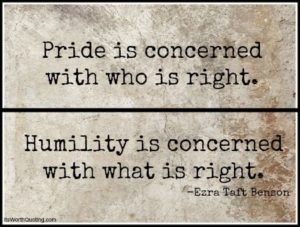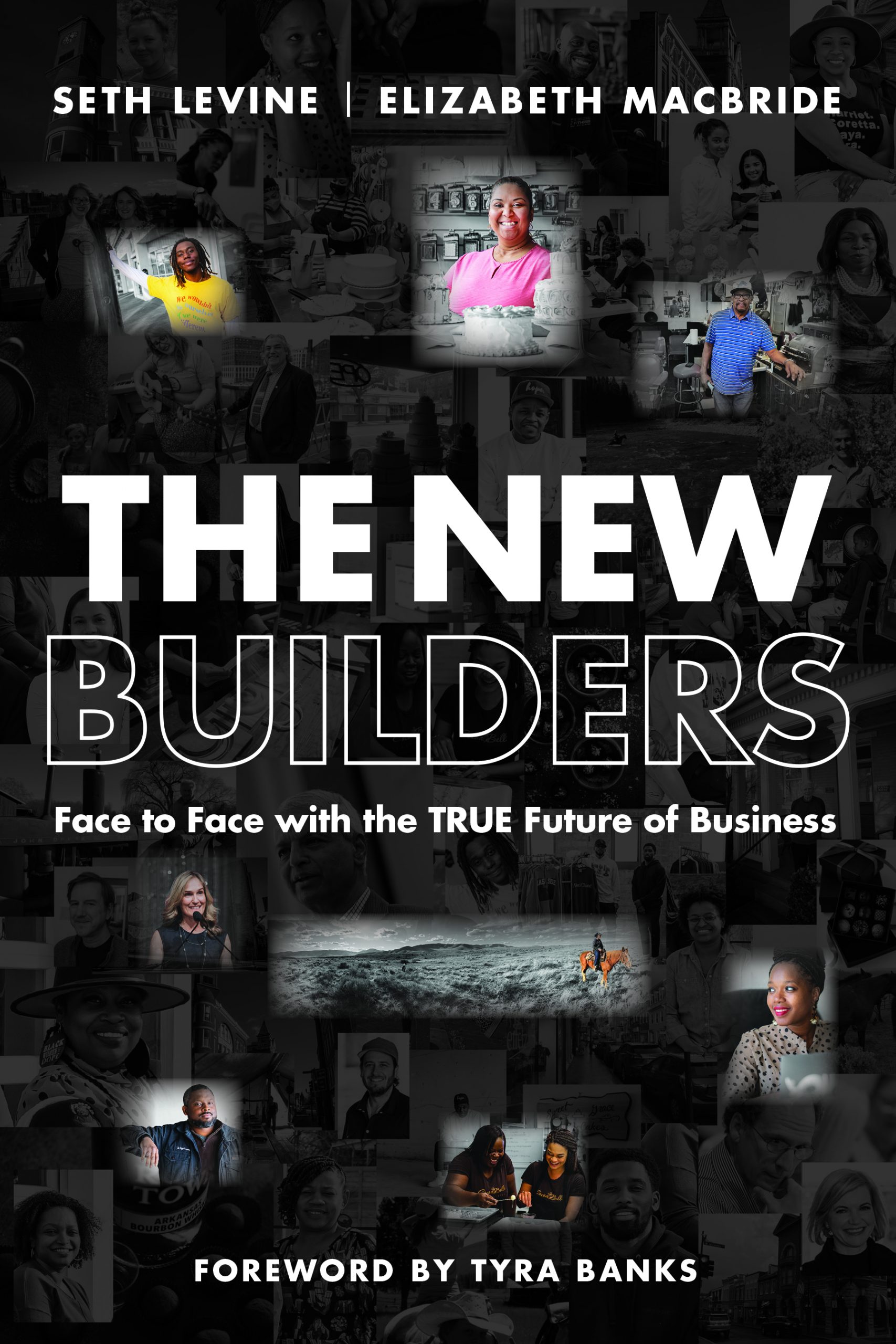Drowning
I’m struggling and I’ve avoided talking about it.
I’m used to being busy and I’ve often said that what I like most about my job is the constant phase shifting – it fits my personality and, frankly, my attention span. I’m used to a certain amount of chaos and uncertainty. But lately I’ve been feeling overwhelmed by it. I’m not sure if it’s the constant barrage of news from a president I can’t stand and who I think is ruining our country. Or the friend who was just diagnosed with advanced metastatic stage 4 pancreatic cancer. Or the other friend who was diagnosed with stomach cancer. Or the crap that’s going on in tech and venture that makes my stomach turn. Or just the day to day busy life of a family of 5 with school, sports and everything in between. I feel distracted. I think of Matt and Reggie a lot (and at unexpected times). I’m struggling to focus.
I’ve long prided myself on always being able to take on more. But I think I’ve hit the wall. I both wanted to be open about how I was feeling – maybe others are feeling the same? – and to brainstorm a bit about what I’m trying to do about it. I always feel better when I have a “plan” and I’m trying through this post to create one.
- Slow down. I’m starting to take things off my calendar and say no to more stuff. Bouncing from meeting to meeting isn’t productive and robs me of time both to think and to be proactive.
- Spend more time with the people I love. Seems obvious but in the face of a busy schedule and travel it’s easy for this to get lost. My wife and I are taking more walks together. I’m spending more time with my kids. I’m spending time with my partners. And I’m not trying to hide it on my calendar or in email responses (“I can’t meet then – I’m going home early that night”). I don’t care if people think I’m cool or always at work.
- Define myself more though my relationships than my work. I love my work, but it doesn’t and shouldn’t define me. And I’ve gotten comfortable with my role in our partnership.
- Be deliberate. I’m not just more deliberate with my time and schedule but also with what I’m focused on. I’m really making an effort to spend time on things that really have impact – on Foundry, on our portfolio, on our investors, on our industry. At work these are my highest priorities – not the day to day bullshit that can so easily consume me.
- Speak out. I’m taking stands about the things that are important to me. I’m ignoring the haters. More on this in a separate post…
- Breathe. I’m not particularly into meditation but as part of slowing down I’m taking some deliberate time to stop, stretch and breathe. It’s helping.
Sorry for the overly personal post here. I feel better having written it. Life goes in cycles…this too shall pass.
/sjl
Humility Over Pride
[a version of this was originally posted at Unreasonable.is. i was thinking about it today and wanted to repost it here with some additional commentary. in light of some of what we’re reading about in the tech press it would seem that a remind about this is due]
__________________________
 This advice would seem obvious, if only more people followed it.
This advice would seem obvious, if only more people followed it.
I was attending a board meeting recently where a company put up the following as one of its core values: “Humility over pride”
As I think about how often I interact with people who are so ego-centric and hubris; as I consider how seldom these people show any self-awareness or emotional intelligence; and as I reflect on how universally unpleasant it is to work with people who put themselves first, it reinforces how critically important this principal is.
- Humility over pride means giving before getting.
- Humility over pride means playing a non zero-sum game where everyone benefits.
- Humility over pride means listening before reacting.
- Humility over pride means admitting when you’re wrong or when someone else has a better idea.
- Humility over pride means putting your organization or company’s goals over your own.
I recently gave an interview for the Eyesight Collective where I talked about an experience I had early in my career that completely changed my attitude and outlook on life. In the video I describe the moment when I went from cocky late 20-something back down to earth in a single, transformative experience. I learned a lot from this moment in my life and I hope by sharing it others will too.
Reading Your VC Pitch Meeting
 I’ve come to realize that many – most – entrepreneurs suck at reading pitch meetings. Frequently what I hear from a company CEO is completely uncorrelated to what I hear from the VC they were pitching. In thinking about why this is, the answer is actually relatively straightforward:
I’ve come to realize that many – most – entrepreneurs suck at reading pitch meetings. Frequently what I hear from a company CEO is completely uncorrelated to what I hear from the VC they were pitching. In thinking about why this is, the answer is actually relatively straightforward:
VCs are predisposed to give good meetings. AND By being equivocal at the end of a meeting they preserve maximum option value.
Parsing this a bit further, VCs take a lot of meetings. And they do so with varied motivations. Sometimes they’re legitimately interested in a market space or even a specific business. Sometimes another VC or entrepreneur asks them to take a meeting and they’re trying to preserve a relationship. Sometimes they weren’t paying close enough attention to your email and said yes when they meant to say no. There are lots of varying reasons why you might find yourself in front of a venture capitalist making your pitch. And the quality of those pitches varies a lot. Even among relatively experienced entrepreneurs their ability to convey their business idea varies widely. But all of that said, once you’re in a room with a VC they generally want you to have a good experience. Part of their business, in fact, is to make sure you have a good experience pitching them. Historically this wasn’t the case, but with the fluidity of information that gets passed around among entrepreneurs and the general accessibility of VCs these days most venture capitalists will try their best to make sure that your experience pitching to them is positive. This isn’t a bad thing. But it does lead entrepreneurs into the trap of incorrectly reading a good meeting. Good meetings sometimes just mean that the VC you were pitching to was doing their job.
Ok – so you’ve had a good meeting experience. Now what? Most VCs are not particularly adept at reacting to your idea in real time. Sure, they’ll give you some relatively generic feedback. And if there’s some glaring mismatch between their investment profile and your business they’ll tell you. But for the most part you won’t get a lot of specifics out of them. This is less calculating than it sounds – they often just need to think about what you just presented a bit more and by being equivocating they preserve as much option value as possible. To some extent this is changing as the next generation of venture capitalists are more direct, open and reactive to what they’re hearing in meetings (we certainly try to be at Foundry). But for the most part, left to their own devices, the VC you’ve just pitched will try to get out of your meeting without tipping off their hand too much.
The result of these two factors tends to be good meetings where you leave feeling positive, that the person you met with was “really engaged” (a term I hear a lot from entrepreneurs post meetings), but with undefined next steps and no real understanding of where you stand.
This is a mistake that you shouldn’t make.
The solution here is actually quite simple but you need to be willing to be direct. It starts with being a good time manager of your meeting – if you run out of time you won’t be able to do this. Make sure you hit pause 5 minutes before the meeting is due to end to give yourself time to wrap up. Then be blunt: “What did you think?” (I probably hear this in only about 5% of meetings). The right follow up question should then be about what additional information you can provide to the VC you were meeting with. It’s ok to ask what next steps are but most of the time you’ll get a nebulous answer; by coming up with additional information you can provide you create another touch point that you control while at the same time honing in on areas of your pitch that they either didn’t understand or want to dig further into. The combination of these two questions should give you a better idea of where things stand. A few potential things you’ll hear and their general meaning below:
“Let me noodle on this a bit and get back to you” – means “I’m going to say no, but don’t want to do it in person.”
“Hmm…Let me talk to my partners about it” – means “I’m going to say no and blame my partners”
“Let me introduce you to [person] at another portfolio company to get their take” means – “I’m trending no, but want to be sure I’m not missing something first”
“I’d like to understand more about [insert thing to hear more about]” means – “I have some interest but also some questions. I’m willing to put in at least some more work”
“Can I talk to a few customers” means “I don’t know what the fuck I’m doing and respect neither your time nor your key relationships”
“Let’s schedule another meeting to dig into [thing to dig into]” means “I’m interested and willing to commit more time to this”
Hopefully this is a helpful guide to getting the most out of your pitches and leaving with a realistic view of where you stand. It’s critical in the fundraising process to be spending time with those people who are legitimately interested in your idea and to be realistic about what your actual funding pipeline looks like.
I’d love to hear about your experiences in pitch meetings. And I should probably add to the list above so let me know what other things you’ve heard at the end of your pitch meetings.
Weighing in on Judge Gorsuch
 A number of people have asked me to share my views on Neil Gorsuch in more detail. I’m sure the curiosity stems from the intersection of my personal relationship with Neil and my absolute disdain for President Trump. I am aware given the current political climate that views on this are very polarized. And while a SCOTUS pick will always stir up emotion, the combination of the hyper polarized environment along with the backdrop of Merrick Garland not getting even a hearing for the same seat I know many people who are very angry about the prospects of Trump filling what was Obama’s seat to fill.
A number of people have asked me to share my views on Neil Gorsuch in more detail. I’m sure the curiosity stems from the intersection of my personal relationship with Neil and my absolute disdain for President Trump. I am aware given the current political climate that views on this are very polarized. And while a SCOTUS pick will always stir up emotion, the combination of the hyper polarized environment along with the backdrop of Merrick Garland not getting even a hearing for the same seat I know many people who are very angry about the prospects of Trump filling what was Obama’s seat to fill.
By way of background and to be completely clear, while I know Neal, I don’t want to overstate our relationship. He lives nearby and we’ve had a chance to spend time socially together. We are friendly, but I wouldn’t describe us as friends. I’ve met his wife Louise several times as well and about a month before Neil was nominated, Greeley, Louise, Neil and I had dinner with another couple (at the time I knew that Neil was somewhere in line for SCOTUS but actually hadn’t realized that he was on the short list). I have never and would never ask Neil his views on specific legal issues as that wouldn’t be appropriate.
And to be very clear my views on Trump and his policies, I truly detest the man. I’ve been extremely clear about this on my Twitter feed as well as in this post I wrote a month ago. Daily, I find myself dismayed by the both man himself as well as many of his policies. And while I don’t consider myself a partisan, I am a staunch supporter of individual liberties, equality and equal protection under the law. I am strongly pro-choice and emphatically in favor of marriage equality, among other key issues. My read of the constitution suggests that none of these issues are so called “states rights” issues, but instead are clearly protected federally under both precedent law and the constitution.
It’s hard for me to imagine a better Republican choice for SCOTUS than Neil. In fact, nominating him was by far the single best thing Trump has done as President. The test for a supreme court nominee should NOT be whether they agree with your political views, nor whether they will adjudicate the way you would. That’s simply partisan politics and the court should be above that. Instead we should evaluate supreme court nominees by their qualifications for the job. Are they prepared by their background to face the responsibilities of the highest court? Are they temperamentally suited to the position? Will they approach cases dispassionately and with an open mind? I have absolutely no doubt that Neil is absolutely and completely qualified across all of these factors and more. And while there’s no doubt that Neil is a conservative judge, I believe he’s actually much more open minded than he’s being given credit for in the press. And while he’s an originalist he doesn’t, in my view, believe this means that the constitution should be interpreted strictly as the writers then current views would suggest (he’s said very clearly, for example, that a number of the framers were racist and sexist – that doesn’t allow a judge interpreting the law today to do so through those lenses). Will Judge Gorsuch rule in every case the way I might? Absolutely not. Will he at times, in my estimation, surprise us. Absolutely. Without a doubt Neil is an independent thinker, a kind and gentle person and a calm, rational interpreter of the laws. I think that’s exactly what we need on the Supreme Court right now.
You can be much more productive. Here’s how.
I wrote a post a few days ago about 2 productivity hacks that I’ve been using that have transformed my work life. I got a great response to that post with a number of people asking me what other tools I’ve found that help make my world more productive. Micah, who works with me at Foundry, put together a list of the tools we’ve been using (or at least experimented with) that I wanted to share. Let me know if you have ones of your own you think I should add to the list.
- TextExpander – store frequently types phrases/notes across all devices
- Wunderlist– To Do list on all your devices – supports team collaboration
- Trello – collaborative task list for Teams, works well with Agile/Lean methodologies
- Asana – To-do list that allows for super granular level of detail for todo lists and team collaboration
- Voxer – Walkie talkie/messaging app for instant communication with your closest contacts you want to be more responsive to than email
- Zapier OR IFTTT – connect the tools you use to each other based on triggers/recipes and actions (Ex. Save pocket starred items to Evernote folder)
- Copyclip or Paste – Keep all of your copied/clipboard items in one place so you don’t lose anything
- Charlie App or Accompany* – Easily get a briefing on who you are meeting
- FullContact – a unified address book across accounts, devices and organizations (now supports teams)
- Notability App – Take notes on your ipad and have them sent and OCR to Evernote
- Yoink – Simplify Drag and Drop by using Yoink to move files around your fullscreen apps
- Call please – web/app call list of people to connect with (helps avoid scheduling set times for meetings that don’t need to be scheduled..)
- LastPass or dashlane – Never forget a password or deal with login troubles again!
- F.lux – save your eyes from the eerie blue glow of screens (especially at night)
- Toggl – A simple online timer with a powerful timesheet calculator, great full review about Toggl here (see RescueTime to block notifications/programs for work blocks)
- Magnet or spectacle – Mac app to move and resize windows with ease (built into windows)
- Headspace – Although it seems counter-intuitive to use a smart device for meditating, this app will help put you in the right frame of mind
- Blinkist – Book summaries, 1,500+ best-selling nonfiction books, transformed into powerful shorts you can read or listen to in 15 minutes
- Goodreads – Lets users track and rate books and network with other readers
- Pocket – Allows you to easily save webpages for later reading (syncs across devices as well, which is a real bonus)
Chrome/Gmail Extension:
- Full contact or rapporative to see public info on people
- MatterMark – Get info on companies (web & mobile app too)
- Grammarly – Writing-enhancement tool with proofreading capabilities to check for a writer’s adherence to more than 250 grammar rules
CRM
- Streak – Spreadsheet in your inbox, mail merge, email Templates, snooze mail, send later, team collaboration and more.
- MixMax – Awesome for scheduling meetings by sending a live table, avoid the back and forth and double bookings! Also does templates, mail merge and tracks opens, clicks and downloads
- SalesForceIQ – Sales focused CRM
Websites:
- Conspire (recently acquired by FullContact) – see how you are connected to the people you want to reach through your network
- Internet Archive Wayback Machine – See what websites used to look like at a specific point in time
- Power Googling Infograph – Sample search queries to tap into the power of Google Search
Specific Startup tools
- Usepodium.com for pitch feedback
- Docusign OR HelloSign – stop sending PDF’s to sign – streamline the whole process and know when docs are opened, signed, etc.
- Docsend – track, control, send, and present sales materials with real-time document analytics.
Assistant Services
- youcanbook.me or calendly – scheduling made easy, great for sales people, demos or office hours
- Clara ($$)- AI for scheduling (I use Clara for scheduling the majority of my meetings)
- Magic ($) -For simple tasks (schedule oil change, pick up flowers, order food, etc.)
- Pana ($) – Personal travel concierge, book flights by msging Pana where you want to go and when
$ – costs money
* – beta
2 Productivity Hacks That Will Change Your (work) Life
I’ve been putting a lot of effort into enhancing my productivity. I actually hired a coach to help me with this (more on that in another post) and have changed around a LOT of my work life in an effort to free up time. I’ll write a longer post on a handful of tools that I’ve found that have significantly increased my ability to get work done, but I thought I’d share some low hanging fruit with everyone about the 2 things I did that have most changed my life.
#1 – Know Who You Want to Meet With
I was going to title this “Say No More” but lots of people have written about that. And what I’ve found is that the trick to saying no more is being very specific about who you ARE willing to meet with. And by specific I mean make a list and share it with someone. Ideally someone who has access to your calendar and can call you out if you start setting meetings with people who don’t fit one of the categories you enumerated. In addition, at the end of every week you should review the meetings you have the following week and double check that they map to your list. Cancel the ones that don’t. Doing this methodically has freed up a significant amount of time. And most people I know (myself included) spend way too much time in meetings and not enough time actually working. You probably think you already do a good job of this (I sure did). You don’t. Make a list, check it twice, free up time.
#2 – Email Isn’t A Good Workflow Tool
 Even the most organized inbox isn’t a workflow or productivity tool. But most people treat it that way. Email is the first thing you look at in the morning, the last thing you look at before you go to bed and the place you retreat to when you have a free moment. It’s always up and always on.
Even the most organized inbox isn’t a workflow or productivity tool. But most people treat it that way. Email is the first thing you look at in the morning, the last thing you look at before you go to bed and the place you retreat to when you have a free moment. It’s always up and always on.
This is a huge mistake.
And not just for the obvious “time shifting is bad for productivity” reasons that others have written about. It’s because email isn’t designed to help you organize and prioritize your work life. For that you should be using some kind of task manager or list tool. I personally use Asana for this but you could use Trello, Wunderlist, etc. to the same effect. Every morning instead of jumping into email I run through a “morning routine”. This involves looking at my calendar for the day and then opening up Asana to organize my priorities for the day (including anything left over from the day before). Anything that’s likely to take more than 5 or 10 minutes I try to block time for explicitly on my calendar. I can easily move around the order of these tasks to keep my priorities in order. I do all of this before I even open email. In fact I’ve found that when I don’t start in email, my urge to jump into it is often so low in the morning that I’ll run through my daily reading list or read the Times and not even get to email early morning.
During the day, when I have free time or a break between meetings, I don’t hit email. I start with Asana and the next priority task for the day. Sometimes that task will bring me back to email (say to review a document that was sent to me or to compose an email that is my next “task” for the day). When I do this I don’t get sucked in. The key is to keep with the task at hand and then head back to Asana for the next priority.
This is a radical change from the way most people work and took some time to get used to (the pull of email is strong). But over time I’ve found it’s a significantly better way manage my time. I’ve let everyone I work with know that email isn’t a good way to get my attention during the day (I’m only in my inbox 2 or 3 times each day) and encouraged them to reach out on text, Slack or Voxer if something comes up that needs my attention more immediately (side note: there are very few “venture capital emergencies”; please don’t let anyone convince you otherwise).
So there you have it. Two quick but maybe not easy things you can do to free up time and radically increase your productivity.
There is no middle ground
 While I’ve been very vocal on my Twitter feed for months about Trump I haven ‘t put up any long form content here about it. Maybe it has just been easier to shout into the Twittersphere than it was to really sit down and talk about the challenges ahead of us. Maybe I wasn’t ready to put it into a format that exceeded 140 characters. And for some time I had hoped that maybe things would moderate and calm down.
While I’ve been very vocal on my Twitter feed for months about Trump I haven ‘t put up any long form content here about it. Maybe it has just been easier to shout into the Twittersphere than it was to really sit down and talk about the challenges ahead of us. Maybe I wasn’t ready to put it into a format that exceeded 140 characters. And for some time I had hoped that maybe things would moderate and calm down.
They haven’t. And in fact they’re getting worse.
Like I suspect many of you did, I woke up the morning of November 9th pretty upset. I jokingly called it the trifecta of crap: 1) I was tired, having stayed up late watching the election returns; 2) I had too much to drink the night before as the returns rolled in and had a headache; and 3) Donald Trump was our president elect.
My first instinct was to dress in all black and head into mourning. It was a depressing day in my view of America and I was ready to go crawl into a hole. But then I read a few emails from portfolio CEOs concerned about the future. And I saw one of my daughters who was upset both because of Trump and because she thought that meant we were going to have to move (we had jokingly (?) talked about finding a new home for a few years if Trump was to be elected). I paused for a few minutes and thought about both my reaction and the reaction of the world around me and realized that I needed to think about things differently. First I penned a note to our entire portfolio that I shared in a previous post – the note essentially said “let’s take a step back and see how this plays out before we all react”. Then Greeley and I sat down with our kids and delivered a similar message. We live outside of Boulder and our kids go to a public school one town over that is mixed in terms of background, socioeconomics, religion and politics. We had a good conversation about how some of their friends (and friend’s parents) were going to be happy about Trump’s election and some wouldn’t but that they shouldn’t place value judgements on either – let people react the way they were going to react. I then went and put on my brightest shirt and went off to work trying to muster as much positive energy as I could (tweeted about that here, in fact). I took some heart in knowing that we actually know quite a few people who voted for Trump (all of whom are decent, caring people).
That attitude is no longer working for me, however. Somewhere in the craziness of the first week of Trump, I’ve lost my ability to stay positive. And I feel the need to be clear – in greater than 140 characters – that I think America is on the wrong track. Trump has lost his hold on reality. A president with no popular mandate and a historically small electoral college victory is pandering to the most extreme and hateful elements of our society. His views on issues up and down the policy stack are wrong. They are un-American. They divide us. They make us less safe. People of good conscience MUST speak up. On social media. Everywhere online. In person.
History will judge our actions and words in the face of Trump’s threat to American ideals. Stand up and be counted! There is no middle ground.
Free Money | Supporting Entrepreneurial Non-Profits
 At Pledge 1% our mission is to encourage entrepreneurs and companies to give back to their communities through the donation of equity, product, profit and time to non-profits. We launched this program less than a year ago we already have over 1,000 members of our community. And it’s growing quickly.
At Pledge 1% our mission is to encourage entrepreneurs and companies to give back to their communities through the donation of equity, product, profit and time to non-profits. We launched this program less than a year ago we already have over 1,000 members of our community. And it’s growing quickly.
As entrepreneurs ourselves we’re always looking for new and innovative ideas that help us achieve our mission. Today we’re announcing a major new idea in connection with SRS Acquiom, EscrowUP. The idea behind EscrowUp is as brilliant as it is simple. When companies sell, buyers typically set aside a portion of the purchase price (often 10-15% of the total deal value) in case unexpected expenses come up. For simplicity sake these escrows are typically put in non interest bearing accounts (the accounting of the small amount of interest generated relative to the total deal value isn’t worth the hassle). Often this money sits in escrow for 18 months or more. EscrowUP is a program that places this money into an interest bearing account and directs that interest to charity. To be clear, the parties can still pick an interest bearing account if they’d like and the account can still generate excess interest for the program. It’s a win-win for everyone to participate and all managed by SRS and Pledge 1%.
EscrowUP supports nonprofit organizations that help emerging entrepreneurs, including women, veterans and those in emerging markets, gain access to mentors, skills, capital and the tools they need to thrive. These nonprofits are listed at the end of this post.
I’m incredibly excited about this idea and the impact we can have across these important non-profits. I hope you’ll help me spread the word.

SPRINGBOARD ENTERPRISES
Since 2000, Springboard Enterprises has served as a resource hub of influencers, investors and innovators engaged in helping women build big businesses.

ENDEAVOR
Endeavor helps entrepreneurs in emerging and growth markets gain access to mentors, capital and human resources so they can take their businesses global.

PATRIOT BOOT CAMP
Patriot Boot Camp (PBC) equips active duty military members, veterans, and their spouses with the education, resources and community needed to be successful technology entrepreneurs.

GIRLS WHO CODE
Girls Who Code works to educate, inspire and equip young women with the skills and resources to pursue academic and career opportunities in computing fields.

PLEDGE 1%
Pledge 1% empowers founders and entrepreneurs around the world to integrate giving into the culture and values of their companies.
Taking a deep breath
Below is a note I just sent to our CEOs. While I’m dismayed at what happened last night, now isn’t a time to be reactionary. And the US needs a strong and vocal counterbalance to the hate and bigotry we just empowered.
For many of you, as well as for us, it was a deeply disappointing night. And it’s easy to wake up today with a sense of fear and foreboding about the future of our country. That’s understandable. And while we share that fear we also continue to share an optimism about the greatness of our country and our future. America is a resilient country and we passionately hope that resilience will temper the hate and vitriol that’s been on display over the past months in this election.
We’ve heard from many of you about what last night might mean for your businesses, whether a recession is imminent, whether costs should be cut immediately, etc. And we know that the markets appear to be reacting strongly to the news of a Trump presidency. But we believe that now isn’t the time for reactionary action. If you were excited about your business last week you should be excited about it today.
Our advice for the moment is to let things settle out. Stand up for the beliefs that are important to you. Be vocal within your community about things like tolerance, fairness and inclusiveness. Your employees will be looking to you for how to react. Show them that our economy and your business will go on. That we’ll evaluate the future dispassionately and that your business today isn’t fundamentally different than your business yesterday.
Supporting Cliff Avril and New Story
![]() Earlier this month Seattle Seahawks defensive end Cliff Avril announced that he would support building homes in Haiti – devastated most recently by hurricane Matthew. For every sack Avril gets this season he’s donating $6,000 which is enough to build a home that is both hurricane and earthquake proof.
Earlier this month Seattle Seahawks defensive end Cliff Avril announced that he would support building homes in Haiti – devastated most recently by hurricane Matthew. For every sack Avril gets this season he’s donating $6,000 which is enough to build a home that is both hurricane and earthquake proof.
The charity that Avril is doing this through – New Story – is one that my wife and I know well. It is actually a Y-Combinator company (was the first non-profit to go through the Y-Combinator program) and has developed a very impactful (and novel) model for supporting housing development in areas of need. Greeley and I have been supporting it for a few years. And, in case of funny coincidence, it turned out that my partner Brad was also involved as a member of the New Story advisory board.
Greeley and I were talking about Cliff Avril’s donation and ways we could further help New Story when she said: “why don’t we match Cliff and get a bunch of people to donate as well.” So we reached out to a few friends (and Seattle fans) to see what people thought. We decided to focus on the Seahawks remaining home games (there are 5; fortunately for me none are against either the Broncos or the Patriots) and see how much money we could raise. Very quickly we had commitments for over $13,300 per sack. And the number is going up daily as more and more people respond.
So let’s do this together. New Story is a fantastic charity and one that is not only doing good in the world, but also innovating on the non-profit model. Will you join us in supporting them? There are two ways to get involved. If you want to make a donation you can do so here (100% of these proceeds go directly to building homes). Or, better yet, join our Avril challenge. Just email me the amount you’re committing per sack. At the end of the season we’ll fulfill our pledges and I’ll be sure to announce the total (as we hit milestones I’ll update that here as well).


